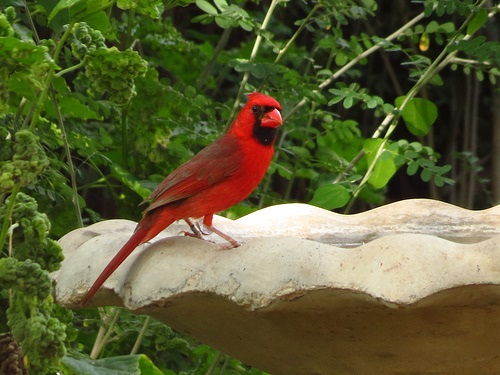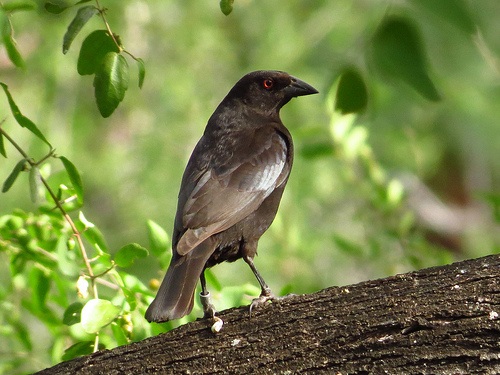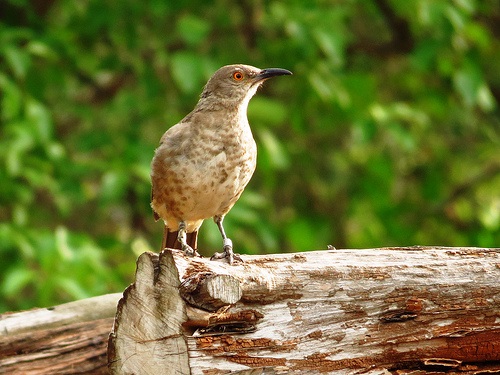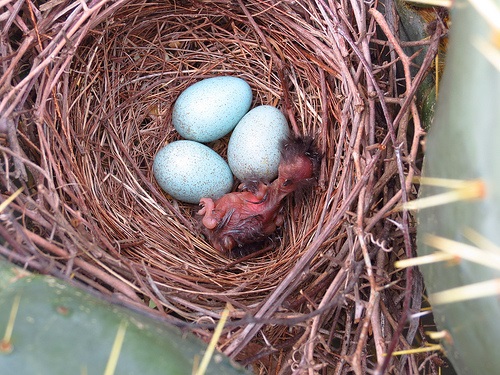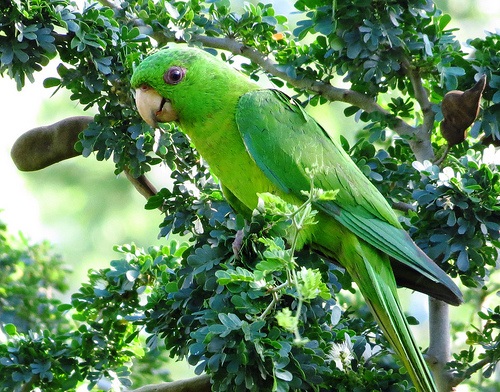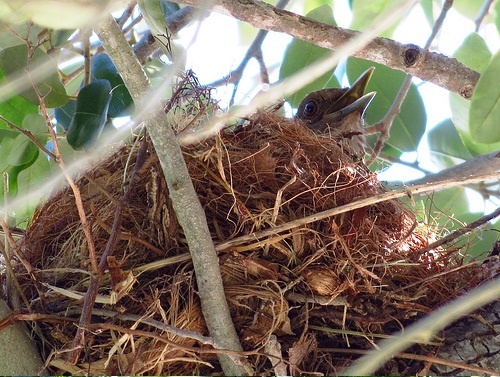by Colleen Curran Hook
Many birds are busy building nests in May and June, as the weather is nice and our native Thorn Forest is producing fruits and other food.

If a tree fork is not available, Kiskadees use man-made poles to support their nest made of grass, moss and bark. Photo by Carlos Hinojosa.
A permanent resident that nests in the Rio Grande Valley is the Great Kiskadee. It’s a showy flycatcher about 10 inches in size with a black and white striped head and yellow belly. Both sexes build the nest, which is shaped like a fat rugby ball, 14-18” long, with a side opening, using whatever material is at hand. They typically build their nest in a tree fork near the top of trees including the Texas Ebony, Mesquite, Hackberry and Cedar Elm.
If a tree top is not available, they may need to use the next best thing, telephone or electric poles. And if no new opportunities present themselves the next year, they will reuse the nest, and refresh with new grass, moss and bark. In the photograph, the monogamous couple is refreshing an old nest—thus the nest looks larger than normal. The side entrance to their home is lined with soft feathers. 
The Great Kiskadee averages 4 to 5 eggs which incubate 15 to 17 days. Young birds stay in the nest approximately 3 to 4 weeks before they fly. The diet of the Kiskadee consists mainly of insects caught in flight, berries, small fish and tadpoles. Male and female are aware of predators and guard their home, the nest and their young. Its loud “kis-ka-dee” call is used to scare off predators.
What should you do if you find a baby bird? In most instances, leave the bird alone. Exceptions arise, but more often than not you do more harm than good by getting involved in a rescue attempt of a baby bird. Exceptions may include rescuing the bird from a dog or cat or getting it out of the road. If you feel the bird fell from its nest too early, you may try and return the bird to its nest. Birds have a poor sense of smell and very strong parental instincts, which means they will usually continue to care for their young. Yet they are cautious and may not return for several hours, so during this period it is best not to re-approach the nest and check on the status of the baby.
The bird breeding season is one of the most exciting times of the year to get to know some of our local birds. Join us for a bird walk to see some nests, eggs, and babies in person!
Join us for a Bird and Nature Walk at 8:30am every Saturday throughout the summer at Quinta Mazatlan!



